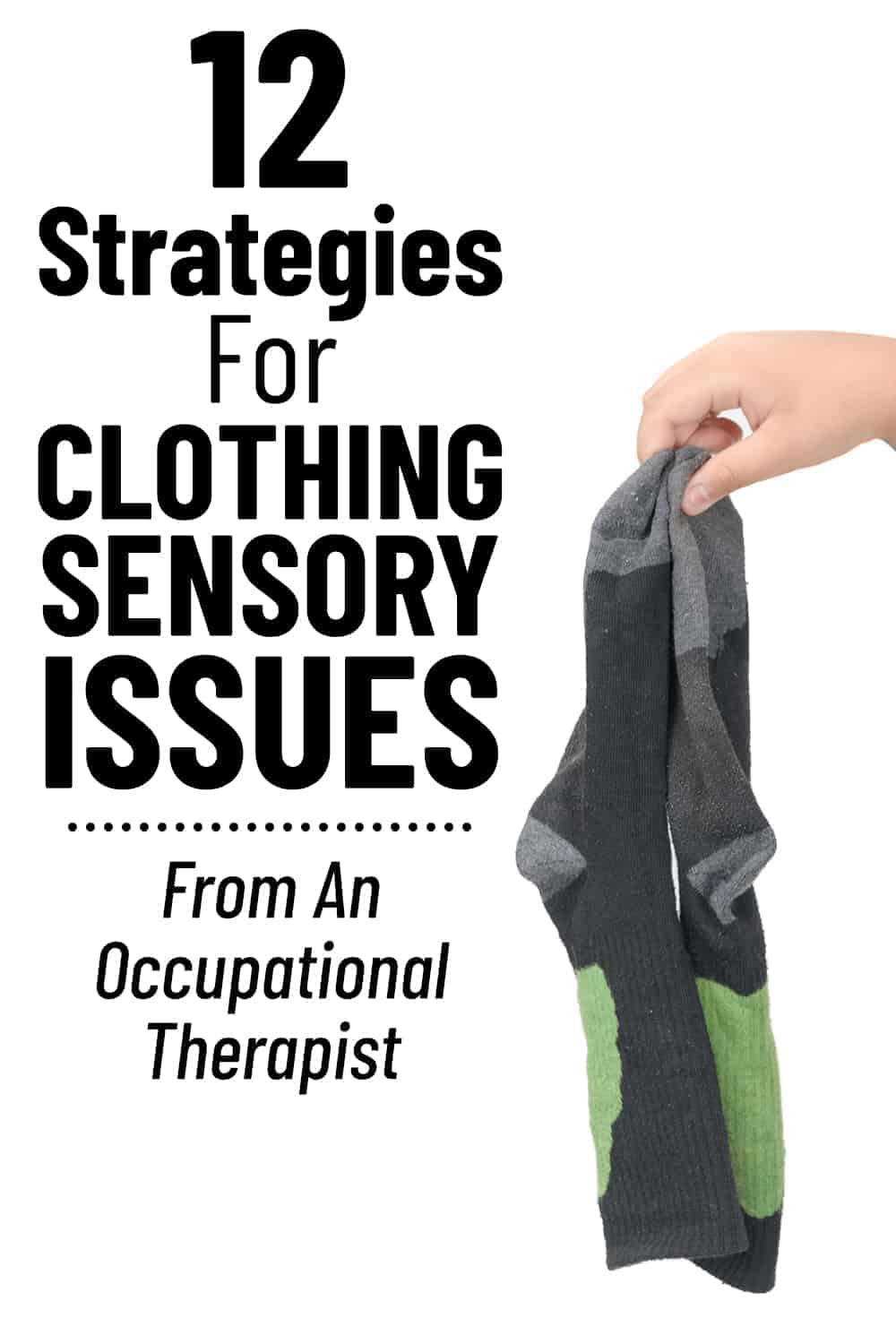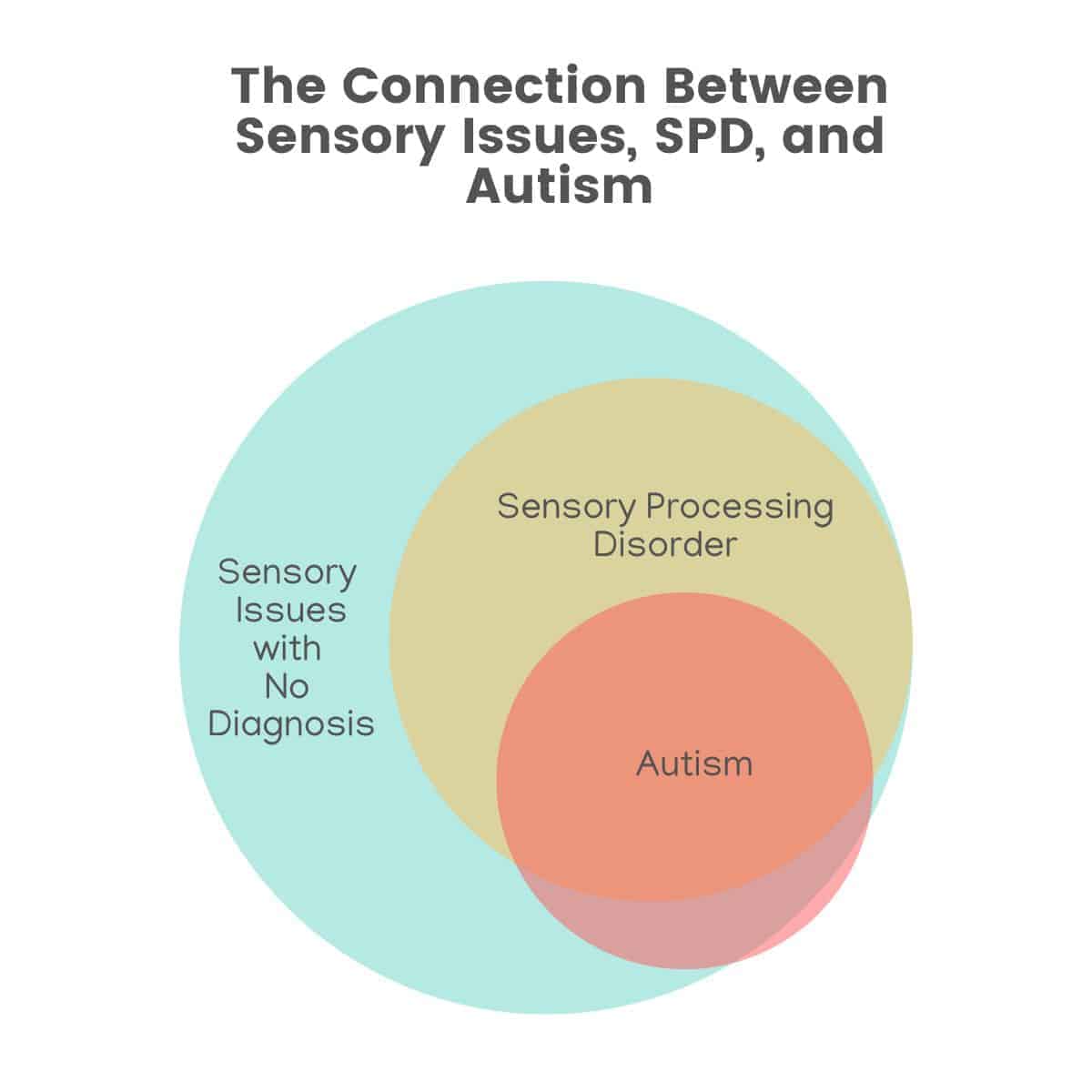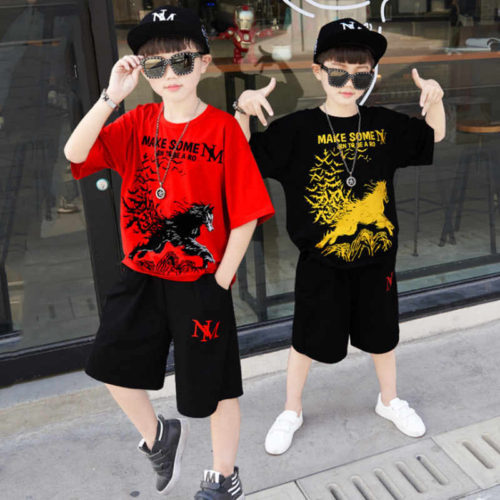Children often refuse to wear clothes. It can puzzle and frustrate parents.
Understanding the reasons behind this behavior is crucial. Some children dislike clothes due to sensory issues. Others might find them uncomfortable or restrictive. Sometimes, it’s a phase of asserting independence. Knowing the cause can help you address the issue effectively.
This blog will explore common reasons and provide practical tips. By the end, you’ll have a better grasp on how to handle this challenge. Let’s dive in and uncover the reasons behind your child’s clothing refusal.
Common Reasons For Clothing Refusal
Parents often face challenges with their children. One common issue is clothing refusal. Understanding why your child refuses to wear clothes can help address the problem effectively. Let’s explore some common reasons behind this behavior.
Sensory Sensitivities
Some children have sensory sensitivities. This means their skin feels different textures more intensely. Clothes can feel scratchy or tight. Tags, seams, and fabrics can irritate them. This discomfort leads to refusal. Soft, seamless clothing may help.
Desire For Control
Children often seek control over their environment. Choosing what to wear is one way they exert control. Refusing clothes can be a way to express independence. Offering choices between two outfits can give them a sense of control.
Developmental Stages And Clothing Preferences
Children’s clothing preferences often change as they grow. Understanding these changes can help ease the frustration. Each developmental stage brings unique challenges and needs. Let’s explore why your child might refuse to wear clothes at different stages.
Toddler Independence
Toddlers crave independence. They want to make their own choices, including what to wear. This stage is marked by a growing sense of self. Toddlers may reject clothes to assert control. They might prefer specific textures or styles. This is normal and part of their development.
Here are some common reasons for clothing refusal in toddlers:
- Desire for control
- Sensitivity to textures
- Preference for certain colors or patterns
Offering choices can help. Let them pick between two outfits. This gives them a sense of control while still guiding their decision.
Preschool Exploration
Preschoolers are curious. They explore their world and themselves. This includes experimenting with clothing. They might refuse clothes that feel restrictive. Or they could be fascinated by dressing and undressing themselves.
Some tips for managing clothing preferences in preschoolers:
- Encourage self-dressing
- Make dressing a fun activity
- Respect their preferences within reason
Understanding their need for exploration can reduce power struggles. Make dressing a part of their daily learning. This can turn a challenging time into a positive experience.
Psychological Factors
Understanding why your child refuses to wear clothes can be challenging. Psychological factors play a significant role. These factors can range from anxiety and stress to attention-seeking behavior. Let’s dive deeper into these aspects.
Anxiety And Stress
Children often feel anxiety and stress in various situations. These feelings can manifest as a refusal to wear clothes. For example, if a child feels overwhelmed, they might avoid getting dressed. Stress from changes in routine or environment can also contribute to this behavior.
Here are some common sources of anxiety and stress for children:
- Changes in routine
- New environments
- Social pressures
- Family dynamics
Addressing these sources can help reduce anxiety. Creating a calm, predictable environment can make dressing easier. Using positive reinforcement can also encourage your child.
Attention-seeking Behavior
Some children refuse to wear clothes to get attention. They might feel ignored and use this behavior to gain focus from adults. This behavior is a way to communicate their needs and emotions.
To address attention-seeking behavior, consider these strategies:
- Provide consistent, positive attention.
- Acknowledge their feelings.
- Set clear boundaries.
- Use positive reinforcement.
By understanding the reasons behind their actions, you can respond more effectively. This helps build a positive and supportive relationship with your child.
Impact Of Environment
The environment plays a crucial role in a child’s behavior. Understanding why your child refuses to wear clothes can be linked to their surroundings. Several factors within the home and social settings can influence this behavior.
Home Atmosphere
The home atmosphere significantly affects a child’s comfort with clothing. A chaotic or stressful home can make children feel uneasy. Children may then resist wearing clothes as a form of control. Consistent routines and a calm environment help children feel safe and secure.
Parents’ reactions also matter. If parents react strongly to a child’s refusal, it can reinforce the behavior. Children seek attention, and any reaction, even negative, can encourage them to continue. Positive reinforcement works better. Praise children when they comply, and offer gentle encouragement.
School And Social Settings
School and social settings can also impact your child’s comfort with clothes. Sensory issues often arise in these environments. Children with sensory processing disorders find certain fabrics and textures uncomfortable. They may prefer loose or no clothing to avoid distress.
Peer interactions matter too. Children may feel self-conscious about their clothing choices. Bullying or teasing can make them refuse to wear certain clothes. It is important to communicate with teachers and ensure a supportive environment at school.
Understanding the impact of these environments helps in addressing the issue effectively. A supportive and calm approach works best in helping your child feel comfortable wearing clothes.
Role Of Parenting Style
Understanding why your child refuses to wear clothes can be challenging. The way you parent plays a significant role. Different parenting styles can affect this behavior. Let’s explore how the authoritative and permissive approaches impact your child’s willingness to dress.
Authoritative Approach
Parents with an authoritative style set clear rules. They explain the reasons behind these rules. This approach combines firmness with warmth. Children understand what is expected of them. They feel secure and respected. Thus, they may be more likely to follow instructions, including getting dressed.
Permissive Approach
Permissive parents tend to be lenient. They avoid setting strict rules. Instead, they allow children to make many choices. This freedom can lead to a lack of structure. Children may feel overwhelmed by too many options. They might refuse to wear clothes simply because they can. This behavior stems from not having clear boundaries.
Effective Communication Strategies
Understanding why your child refuses to wear clothes can be challenging. Using effective communication strategies can help. By fostering a supportive environment, you can encourage your child to express their feelings. Below, we explore two key strategies.
Active Listening
Active listening involves more than just hearing your child. Show genuine interest in what they say. This helps them feel valued and understood.
Here are some tips for active listening:
- Make eye contact.
- Nod to show you are listening.
- Repeat back what they say in your own words.
For example, if your child says, “I don’t like this shirt,” respond with, “You don’t like how it feels on you?” This shows you are paying attention.
Positive Reinforcement
Positive reinforcement encourages good behavior by rewarding it. This can motivate your child to wear clothes.
Consider these methods:
- Offer praise when they wear clothes without fuss.
- Use a reward chart for consistent behavior.
- Give small rewards like stickers or extra playtime.
A sample reward chart might look like this:
| Day | Behavior | Reward |
|---|---|---|
| Monday | Wore clothes all day | Sticker |
| Tuesday | Wore clothes all day | Sticker |
| Wednesday | Wore clothes all day | Extra playtime |
Using these strategies can make the process smoother. Your child will feel understood and motivated.
Creating A Routine
Creating a routine can help your child feel more secure. It provides structure and predictability. This helps reduce anxiety around getting dressed. Establishing a routine involves consistent schedules and predictable patterns.
Consistent Schedule
Children thrive on consistency. A set schedule gives them clear expectations. Start the day at the same time. This includes wake-up time and breakfast. After breakfast, set a specific time for getting dressed. This helps them know what to expect next. Consistency makes the task less daunting.
Predictable Patterns
Incorporating predictable patterns into the routine is essential. Use visual schedules or charts. This can show the sequence of activities. For example, first breakfast, then getting dressed, and then playtime. Repeat this pattern daily. Over time, it becomes second nature. Predictable patterns provide comfort and reduce resistance.

Credit: www.youtube.com
Addressing Sensory Issues
Many children refuse to wear clothes due to sensory issues. These issues make certain textures or tightness uncomfortable. Understanding these problems can help parents find solutions. This section covers ways to address sensory issues by choosing the right fabrics and clothing.
Comfortable Fabrics
Children with sensory issues need soft and breathable fabrics. These fabrics reduce discomfort and irritation. Here are some fabric options:
- Cotton: Soft, breathable, and gentle on sensitive skin.
- Bamboo: Smooth texture and natural moisture-wicking properties.
- Modal: Soft and lightweight, perfect for sensitive skin.
Avoid fabrics like wool or polyester. These can be itchy and uncomfortable.
Sensory-friendly Clothing
Sensory-friendly clothing has features designed for children with sensory issues. These features ensure comfort and reduce irritation. Key features include:
| Feature | Benefit |
|---|---|
| Seamless Design | Prevents chafing and discomfort. |
| Tagless Labels | Eliminates itching from tags. |
| Flat Seams | Reduces friction against the skin. |
| Soft Waistbands | Prevents tightness around the waist. |
Look for these features when shopping for clothes. They make a big difference in comfort.
Remember, each child is unique. It may take time to find the right clothes. Patience is key.
Encouraging Independence
Encouraging your child’s independence can be challenging, especially if they refuse to wear clothes. This behavior often stems from their desire to assert control and make decisions. Embrace this phase as an opportunity to teach them valuable life skills.
Offering Choices
Children love having options. Provide a few outfit choices each morning. This can give them a sense of control. Let them pick between two or three weather-appropriate outfits. This way, they feel involved in the decision-making process.
Ensure the choices are simple and limited. Too many options can overwhelm them. By offering a selection, you help them practice decision-making and boost their confidence.
Allowing Self-dressing
Letting your child dress themselves promotes independence. This task can be challenging, so start with easy clothing. Choose items with elastic waistbands and minimal buttons. These are easier for little hands to manage.
Be patient as they learn. Offer gentle guidance and praise their efforts. Your encouragement can make a big difference. They will feel proud of their new skills. Over time, they will become more confident and capable.
Using Play To Teach
Children may refuse to wear clothes for various reasons. Using play to teach them can be a highly effective approach. Play is a natural way for children to learn and understand the world around them. By incorporating play into daily routines, parents can make dressing up fun and engaging.
Dress-up Games
Dress-up games can make wearing clothes exciting. Create a costume box with different outfits and accessories. Encourage your child to pick and wear different clothes. This can help them get used to wearing various types of clothing. You can also organize themed dress-up days. For example:
- Superhero Day
- Animal Day
- Fairy Tale Day
Let your child choose their favorite characters. This makes dressing up feel like an adventure. You can also participate in these dress-up games. Your involvement makes it more enjoyable and less of a chore.
Storytelling Techniques
Storytelling can be another engaging way to teach children about clothes. Create stories where the characters need to wear certain clothes. For instance:
- A firefighter putting on their uniform to save the day.
- A princess dressing up for a royal ball.
- A pirate wearing boots to find hidden treasure.
Use puppets or dolls to act out these stories. This visual aid can help children understand the importance of clothes. You can also ask your child to create their own stories. This encourages creativity while reinforcing the lesson.
By integrating play into daily routines, parents can make dressing up a fun and educational experience. This approach helps children understand the value of wearing clothes in a positive and engaging manner.
Seeking Professional Help
Sometimes, parents feel helpless when their child refuses to wear clothes. This behavior can be frustrating and confusing. Seeking professional help can provide insight and solutions. Experts can help address the underlying issues. Here are some ways to seek professional help.
Consulting Pediatricians
A pediatrician is a great starting point. They understand child development well. They can check for medical conditions that might cause discomfort. Skin allergies or sensory issues might be the reason. If needed, they can refer you to other specialists.
Therapeutic Interventions
Therapists can offer valuable support. Occupational therapists specialize in sensory processing issues. They can create strategies to make wearing clothes more comfortable. Behavioral therapists can address any behavioral concerns. They can teach coping skills to help the child adapt.

Credit: yourkidstable.com
Parental Self-care
Dealing with a child who refuses to wear clothes can be stressful. As parents, you often prioritize your child’s needs over your own. But remember, taking care of yourself is just as important. Parental self-care isn’t selfish; it’s necessary for your well-being. When you are calm and centered, you can better support your child.
Managing Stress
Stress can build up quickly when dealing with challenging behaviors. Managing stress is essential for your mental health. Here are some practical tips:
- Practice deep breathing exercises. Just a few minutes can make a difference.
- Engage in physical activities. A short walk or simple stretches can help.
- Take breaks. Even short breaks can recharge your energy.
- Maintain a healthy diet. Balanced meals can improve your mood and energy levels.
- Get enough sleep. Quality sleep is vital for stress management.
Finding Support Groups
Connecting with other parents who face similar challenges can be comforting. Finding support groups can offer you practical advice and emotional support. Consider these options:
- Local parenting groups. Check community centers or libraries for meetings.
- Online forums. Many websites and social media platforms offer parent support groups.
- Professional counseling. Therapists can provide guidance and coping strategies.
Support groups offer a safe space to share experiences. You can learn from others and feel less isolated. Remember, you are not alone in this journey.
Celebrating Small Wins
Helping your child feel comfortable in clothes can be challenging. But, recognizing and celebrating small victories can make a big difference. It builds confidence and creates positive associations with wearing clothes. Let’s explore how to celebrate these small wins effectively.
Recognizing Progress
Track your child’s improvements, no matter how minor they seem. It might be as simple as wearing socks or trying on a new shirt.
Use a progress chart to visualize these steps. Mark each achievement with a sticker or a star. This visual aid can motivate your child and make them proud of their progress.
| Day | Achievement |
|---|---|
| Monday | Wore socks |
| Tuesday | Put on a shirt |
| Wednesday | Wore pants for 10 minutes |
Reward Systems
Implementing a reward system can encourage your child to wear clothes. Rewards can be small but meaningful.
Here are some reward ideas:
- Extra playtime
- Favorite snack
- Sticker on the progress chart
- Special outing or activity
Make sure to explain the reward beforehand. This sets clear expectations and motivates your child to participate.
Use rewards consistently. Consistency helps reinforce the behavior you want to see.

Credit: yourkidstable.com
Frequently Asked Questions
Why Does My Child Hate Wearing Clothes?
Children might dislike clothes due to sensory issues. They may find certain fabrics uncomfortable or too tight.
How Can I Help My Child Wear Clothes?
Try soft, tagless clothes. Let your child choose. Make dressing a fun game.
Is Refusing Clothes Normal For Toddlers?
Yes, it’s quite common. They are exploring independence and sensory preferences. Patience is key.
What Are Sensory Issues In Children?
Sensory issues mean discomfort with textures, sounds, or lights. Clothes can feel irritating to some kids.
When Should I Be Concerned About My Child Not Wearing Clothes?
If your child shows extreme distress or it’s affecting daily life, consult a pediatrician or therapist.
Conclusion
Understanding why your child refuses to wear clothes can be challenging. It’s often a phase many kids go through. Patience and empathy are key. Try to make dressing fun and stress-free. Offer choices and let them have some control. Consult a pediatrician if concerns persist.
These tips can help ease the process. Remember, you’re not alone. Many parents face this issue. Stay calm and positive. Your child will eventually outgrow it.




